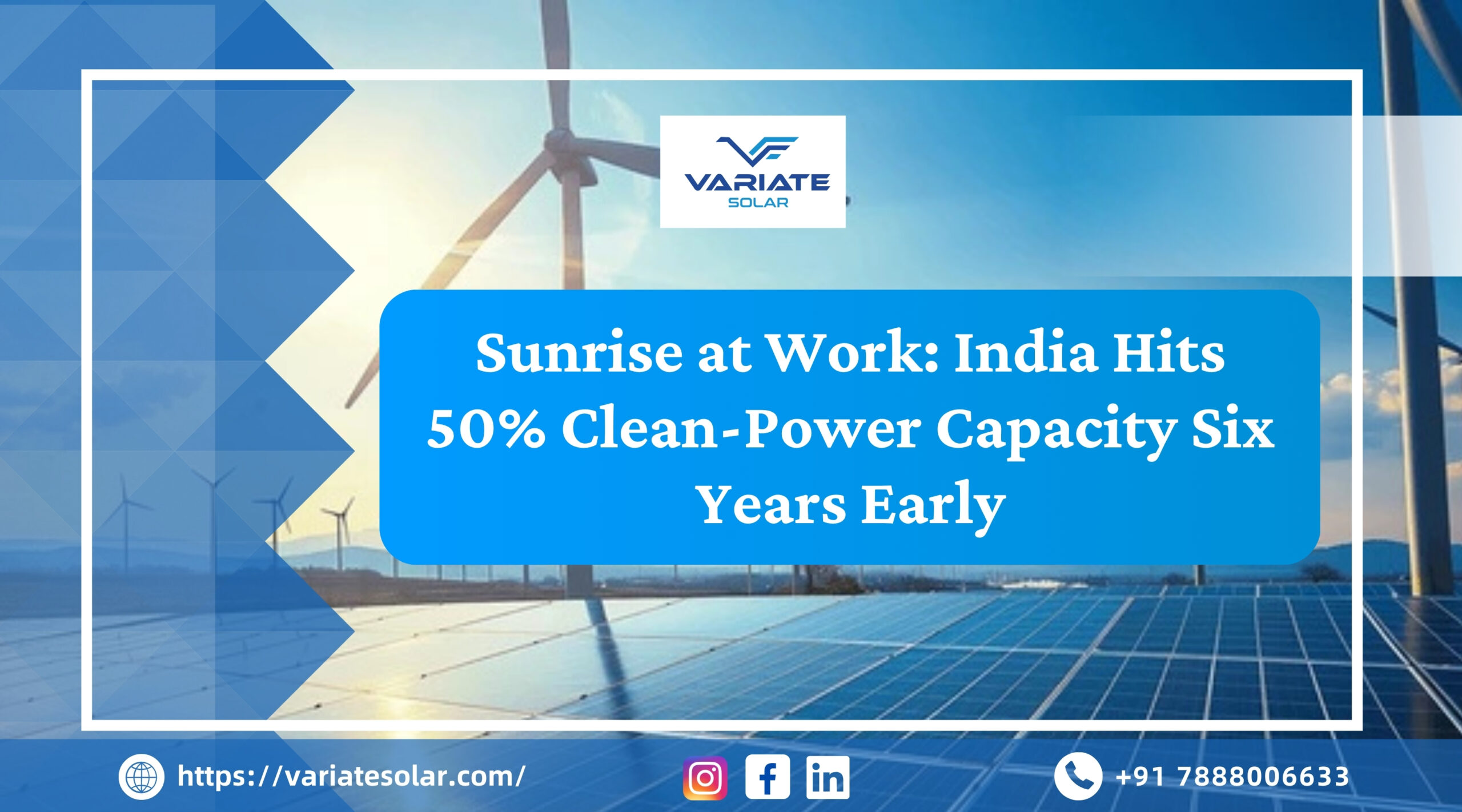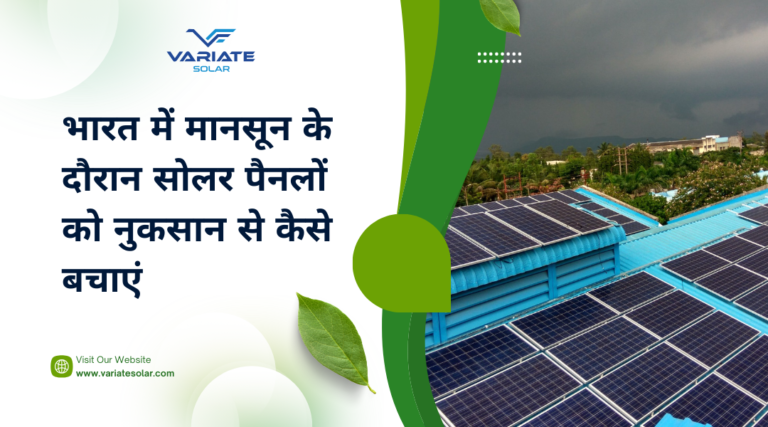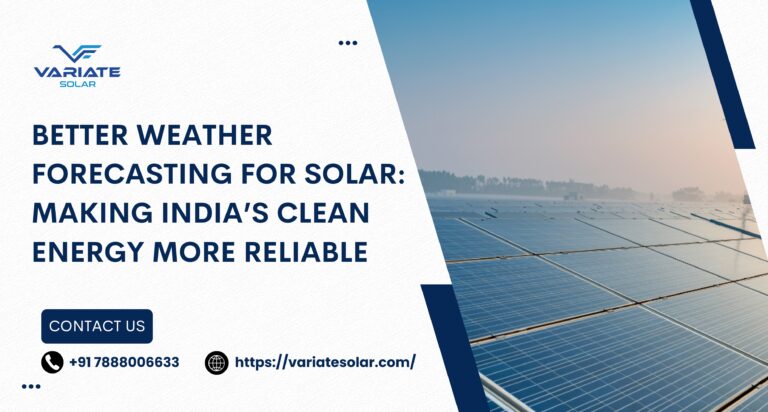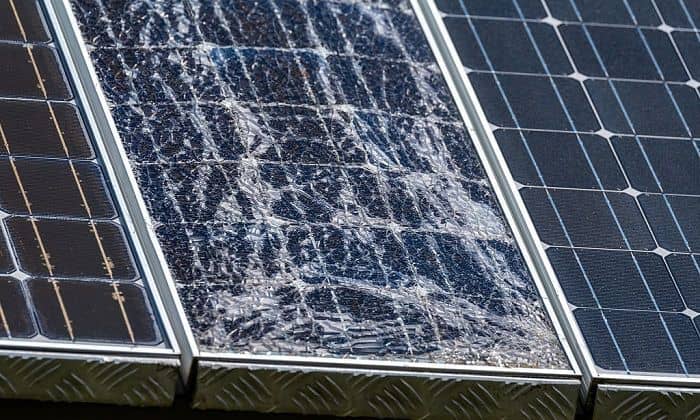Sunrise at Work: India Hits 50% Clean-Power Capacity Six Years Early
India has taken a big leap towards a greener future. In mid-2025, the country reached a major clean energy milestone: over 50% of its total electricity capacity now comes from clean, non-fossil sources like solar, wind, hydro, and nuclear power. What makes this achievement even more impressive is that it happened six years before the target set for 2030 under the Paris Agreement.
What Does “50% Clean Power Capacity” Mean?
Electricity capacity refers to the maximum amount of power that can be generated by a country’s power plants. In India, as of 2025, the total installed electricity capacity is around 484.8 gigawatts (GW). Out of this, 242.8 GW is now coming from clean sources—which means more than half!
Clean or non-fossil sources include:
- Solar energy (from sunlight)
- Wind energy (from wind turbines)
- Hydropower (from dams and rivers)
- Biomass (from organic waste)
- Nuclear energy
Fossil sources like coal and natural gas are still in use, but this shift means India is producing more clean energy than dirty energy in terms of potential.
A Look at the Numbers
Here’s a breakdown of India’s power capacity:
- Total Power Capacity: 484.8 GW
- Non-fossil Capacity: 242.8 GW (50.08%)
- Solar Power Capacity: 116 GW (~24% of the total)
This shift didn’t happen overnight. Over the last two years, India has rapidly increased its renewable capacity:
- In 2024, India added 28 GW of solar and wind power.
- From January to May 2025, another 16.3 GW was added.
Source: Central Electricity Authority (CEA), India, June 2025 Report
How Did India Achieve This?
India’s clean energy success is the result of smart planning, government support, and large-scale investments. Here are some key reasons:
1. Strong Government Policies
India’s government launched many schemes to promote clean energy:
- PM-KUSUM: Helps farmers install solar pumps and panels.
- Surya Ghar Muft Bijli Yojana: Offers free solar power for homes.
- PLI (Production-Linked Incentive): Encourages companies to manufacture solar panels and batteries in India.
These policies made it easier and cheaper to go solar, both for individuals and businesses.
Source: Ministry of New and Renewable Energy (MNRE)
2. Massive Solar Projects
India has built large solar parks like:
- Khavda Renewable Energy Park in Gujarat: Set to be one of the world’s largest, with 30 GW capacity.
- Rewa Ultra Mega Solar Park in Madhya Pradesh.
These projects generate huge amounts of clean electricity and create jobs.
3. Private Sector Involvement
Companies like Adani Green, ReNew Power, and NTPC Green Energy are leading the charge with big investments in solar and wind projects.
4. Cheaper Solar Technology
The cost of solar panels has dropped significantly over the last decade. Today, solar power is one of the cheapest sources of electricity in India.
The Reality: Capacity vs. Actual Power Used
While it’s great that half of India’s power capacity is clean, we must remember an important fact: capacity is not the same as actual electricity used.
In 2024:
- Coal produced 1,517.9 TWh (terawatt-hours) of electricity.
- Renewables produced only 240.5 TWh.
This is because solar and wind power don’t work all the time. For example, solar panels don’t generate power at night, and wind turbines need wind to turn. Coal, unfortunately, is still more reliable in terms of 24/7 power supply.
Source: CEA Load Generation Balance Report 2024
What Needs to Happen Next?
To truly make clean energy the backbone of India’s electricity supply, several steps are needed:
1. More Battery Storage
To use solar and wind energy day and night, India must invest in large battery systems that store extra energy during the day for use at night.
2. Stronger Grids
India’s electricity grid must be upgraded to handle power from many different sources. Smart grids and better planning are needed to balance supply and demand.
3. Quality Over Quantity
Not all solar panels are made equal. Some projects have seen early failures due to poor-quality materials. High standards and better maintenance are important.
4. Training the Workforce
As the renewable sector grows, India needs more skilled workers to build, install, and maintain clean energy systems.
Source: NITI Aayog – Clean Energy Workforce Development 2024
Why This Matters for the World
India is the third-largest emitter of carbon dioxide after China and the U.S. But it is also a growing leader in the clean energy transition. This early achievement sends a strong message globally:
- Clean energy is possible at scale.
- Developing nations can lead the way.
- Clean power is the future.
India’s clean energy journey can inspire other countries to take bold steps, too.
Source: Climate Action Tracker 2025 Assessment
This clean energy milestone has real-life benefits:
- Cleaner air in cities and villages.
- Lower electricity bills in the long run.
- More jobs in solar, wind, and battery industries.
- Energy security—less dependence on coal and oil.
If you’re a homeowner, you can install solar panels and become part of the solution. If you’re a student or job seeker, clean energy offers new career paths. If you run a business, going solar can save costs and build a green brand.
Variate Solar’s Role in a Greener India
At Variate Solar, we believe in making clean energy simple, affordable, and reliable. We work with homes, businesses, and industries to install high-quality solar systems that power a cleaner tomorrow.
We are proud to contribute to India’s green progress—one rooftop at a time.
Conclusion
India’s 50% clean-power milestone is like a sunrise—the beginning of a brighter, cleaner, and more sustainable future.
But this is just the start. The real challenge is to make sure clean power is used consistently and efficiently, replacing coal and gas fully in the years to come.
Let’s keep working, learning, and innovating. Because the sun has only just begun to rise on India’s green energy story.
References:
- Central Electricity Authority (CEA), India – Monthly Reports, June 2025
- Ministry of New and Renewable Energy (MNRE) – Policy Announcements 2023–2025
- International Energy Agency (IEA), World Energy Outlook 2024
- NITI Aayog – Clean Energy Workforce Development Report, 2024
- Climate Action Tracker India Report, 2025
- Press Information Bureau, Government of India – Renewable Updates, May 2025






